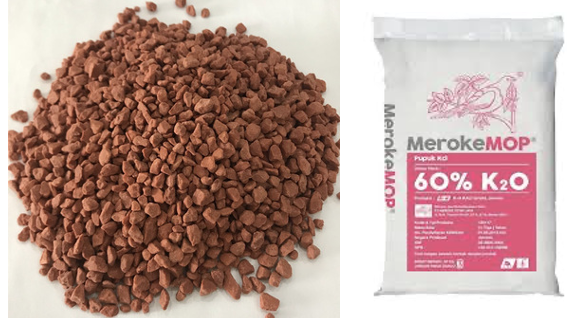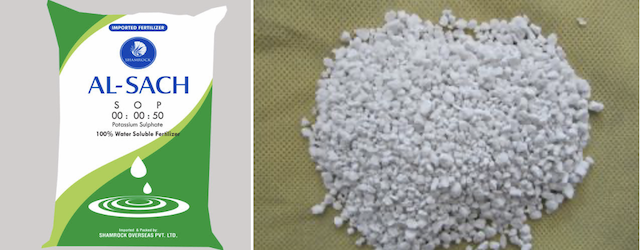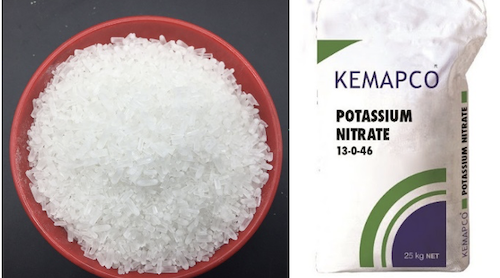💄 Potassium
Potassium Chloride, Potassium Sulphate, Potassium Nitrate
- K containing minerals are primary minerals like feldspar/ or-thoclase, Muscovite and Biotite.
- Highest use of potassic fertilizer in the state of
Maharashtra. - Heavy application of potassium fertilizers often lead to reduced absorption of Zn & Cu.
a. KCL

- It is most common and cheap fertilizer among potassic fertilizers.
- It contains highest (
60 %K2O) among all potassic fertilizer. - Also known as
Muriate of Potash(MOP) /potassium chloride. - This fertilizer is suitable for acidic and heavy soils but not for alkaline soils
- It shouldn’t be used in sugarcane, sugar beet, tobacco, tomato and potato because in sugar crops, accumulation of sugar is affected due to chloride ion present in the fertilizer.
- Higher content of chloride ion reduces burning quality of tobacco and interfere with starch content in Solanaceae crops.
- In these crops should be used K2SO4 and KNO3 instead KCL.
b. K2SO4 (Potassium sulphate)

- Also known as Sulphate of Potash (SOP).
- Contains
48 %K2O,17.5 %S. - Potassium sulphate is used where quality of crop is required because KCL reduce the quality of crops.
- Suitable for light soil and for those crops for which MOP is unsuitable.
c. KNO3

- Potassium nitrate or salt petre or nitre
- It contains
46 %K2O &13% N - It is an excellent source of potassium and nitrogen and mainly used for fruit trees, tobacco and vegetables.
Conversion
- % K2O = K x
1.20 - % K = % K2O x 0.83
Application
- The K fertilizers are usually applied before the crop is planted or sown, that is the basal dressing.
- Since the applied K is not lost from the soil either by leaching or by fixation, K fertilizers can be applied well in advance but it is preferable to apply only just before planting.
- Top dressing with K fertilizers can also be done for vegetables and other crop.
- K containing minerals are primary minerals like feldspar/ or-thoclase, Muscovite and Biotite.
- Highest use of potassic fertilizer in the state of
Maharashtra. - Heavy application of potassium fertilizers often lead to reduced absorption of Zn & Cu.
a. KCL

- It is most common and cheap fertilizer among potassic fertilizers.
- It contains highest (
60 %K2O) among all potassic fertilizer. - Also known as
Muriate of Potash(MOP) /potassium chloride. - This fertilizer is suitable for acidic and heavy soils but not for alkaline soils
- It shouldn’t be used in sugarcane, sugar beet, tobacco, tomato and potato because in sugar crops, accumulation of sugar is affected due to chloride ion present in the fertilizer.
- Higher content of chloride ion reduces burning quality of tobacco and interfere …
Become Successful With AgriDots
Learn the essential skills for getting a seat in the Exam with
🦄 You are a pro member!
Only use this page if purchasing a gift or enterprise account
Plan
Rs
- Unlimited access to PRO courses
- Quizzes with hand-picked meme prizes
- Invite to private Discord chat
- Free Sticker emailed
Lifetime
Rs
1,499
once
- All PRO-tier benefits
- Single payment, lifetime access
- 4,200 bonus xp points
- Next Level
T-shirt shipped worldwide

Yo! You just found a 20% discount using 👉 EASTEREGG

High-quality fitted cotton shirt produced by Next Level Apparel